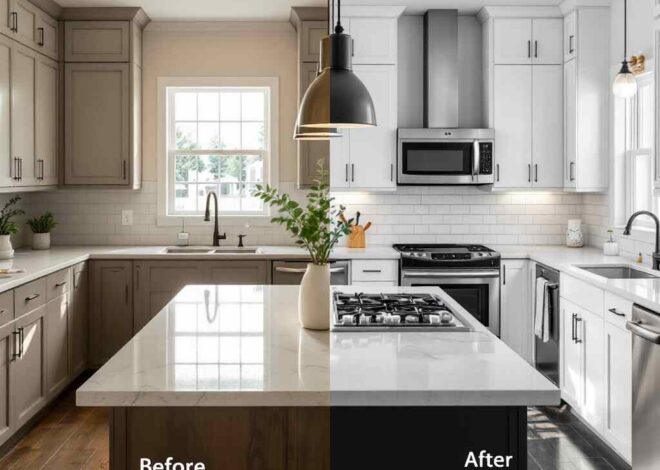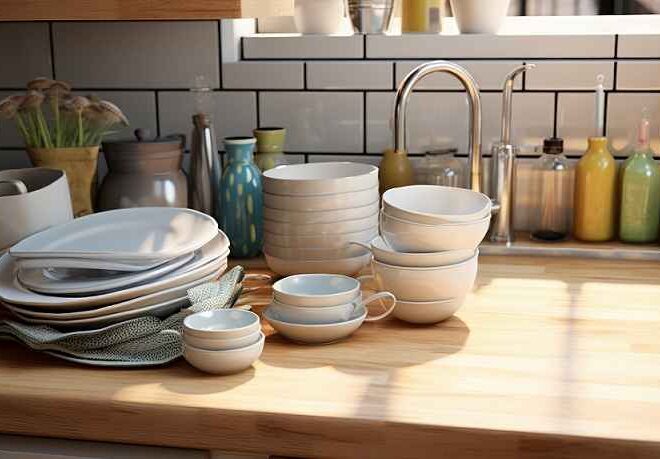
Understanding Upper Kitchen Cabinet Depth: What You Need to Know
When it comes to designing your dream kitchen, every detail counts—right down to the depth of your upper cabinets. It might seem like a small consideration, but choosing the right cabinet depth can make all the difference in both functionality and aesthetics. Are you struggling to find that perfect balance between style and storage? In this blog post, we’ll dive into everything you need to know about upper kitchen cabinet depth—from standard measurements and design trends to tips on maximizing space. Whether you’re renovating an old space or building from scratch, understanding this crucial element will elevate your kitchen game and ensure it’s as practical as it is beautiful. Let’s unlock the secrets behind those shelves!
Introduction to Upper Kitchen Cabinet Depth
Choosing the right cabinet depth plays a crucial role in maximizing storage and ensuring ease of access. What factors should you keep in mind when making this choice? Let’s dive into everything you need to know about upper kitchen cabinet depth—because your dream kitchen deserves just the right fit!
Standard Depth vs. Custom Depth Cabinets
When it comes to upper kitchen cabinets, depth matters significantly. Standard depth typically measures around 12 inches. This is a common choice for many kitchens and offers an efficient balance between space and functionality.
On the other hand, custom depth cabinets can vary widely. They allow homeowners to tailor their kitchen layout according to specific needs or preferences. Custom options can create a seamless design that complements existing features in your home.
Choosing standard versus custom isn’t just about measurements; it’s also about how you use your kitchen daily. If you have unique storage requirements or want to display decorative items, custom depths might be worth considering.
However, keep in mind that deeper cabinets may require more reaching and could obscure visibility of what’s stored inside. It’s essential to weigh these factors based on your personal cooking habits and aesthetic goals before making a decision.
Factors to Consider When Choosing Cabinet Depth
When choosing the depth of your upper kitchen cabinets, several factors come into play. First, consider the layout of your kitchen. A galley-style kitchen may benefit from shallower cabinets to maintain an open feel.
Next, think about functionality. If you store large items like mixing bowls or small appliances, deeper cabinets can accommodate them better. However, be mindful that too much depth might make it hard to reach items at the back.
Accessibility is crucial as well. You want everything within arm’s reach without straining or climbing on a stool for those seldom-used gadgets tucked away in deep recesses.
Finally, aesthetics matter too. The cabinet depth should complement other design elements in your kitchen while maintaining visual balance with lower cabinets and countertops. Each decision shapes not just utility but also beauty in your space.
Pros and Cons of Different Cabinet Depths
Choosing the right depth for your upper kitchen cabinets can significantly influence both functionality and aesthetics.
Standard depth cabinets, typically 12 inches deep, are ideal for everyday items like dishes and glassware. They fit snugly against the wall, allowing more space in smaller kitchens. However, they may limit storage options for bulkier items.
Custom depth cabinets offer flexibility. You can opt for deeper designs that accommodate larger appliances or unique dishware collections. This added space increases storage potential but may overwhelm visually if not balanced with other elements in the kitchen.
Shallower cabinets provide a sleek look and make it easier to reach everything inside without straining. Yet, they might fall short when it comes to fitting larger pots or mixing bowls.
Every option has its merits and drawbacks depending on your specific needs and kitchen layout. Personal preferences will ultimately guide you toward making the best choice.
Tips for Maximizing Storage Space in Upper Cabinets
Maximizing storage space in upper kitchen cabinets can transform your kitchen’s functionality. Start by using stackable containers for pantry items. They create vertical space and keep things organized.
Consider adding pull-out shelves or lazy Susans. These features make it easier to access items at the back of deep cabinets, reducing clutter.
Use clear bins to categorize small items like spices or baking supplies. This not only looks neat but also helps you find what you need quickly.
Magnetic strips are another clever solution for storing metal utensils or spice jars on the inside of cabinet doors, freeing up shelf space.
Label everything clearly so that you always know where each item belongs. It saves time during meal prep and keeps your kitchen tidy.
Lastly, don’t forget about decorative storage solutions like open shelving within reach; they add style while providing easy access to frequently used dishes.
Design Ideas for Different Cabinet Depths
When it comes to upper kitchen cabinets, depth plays a crucial role in design and functionality. For shallower cabinets, consider open shelving or glass-front doors. This creates an airy feel and allows you to showcase dishes and decor.
Deeper cabinets can accommodate larger items like appliances or bulk food storage. Use pull-out shelves for easy access to everything tucked away at the back.
In smaller kitchens, opt for vertical space by extending cabinet height. Adding crown molding can enhance visual appeal while maximizing storage.
For a modern twist, integrate mixed materials. Combine deeper wooden cabinets with sleek metal accents for contrast that catches the eye.
Finally, lighting is essential! Install under-cabinet lights to highlight your cabinetry’s features—be it shallow or deep—and create an inviting atmosphere in your kitchen space.
Conclusion: Finding the Right Cabinet Depth for You
Choosing the right depth for your upper kitchen cabinets is a balance of functionality and style. It’s important to take into account your daily kitchen usage. Whether you lean towards standard depths or custom solutions, make sure it fits your needs.
Evaluate the space available in your kitchen and think about what you plan to store. If you’re an avid cook with lots of gadgets, deeper cabinets may be beneficial. However, if aesthetics are more important for your design vision, shallower options can provide a sleek look while still offering storage.
Consider the height of your ceilings as well; higher ceilings allow more versatility in cabinet depth without sacrificing accessibility. Ultimately, marrying practicality with design will lead to an outcome that enhances both usability and beauty in one of the most vital spaces in your home.
Take time to explore various designs and configurations before making a final decision on upper kitchen cabinets that truly resonate with both form and function for your lifestyle.


